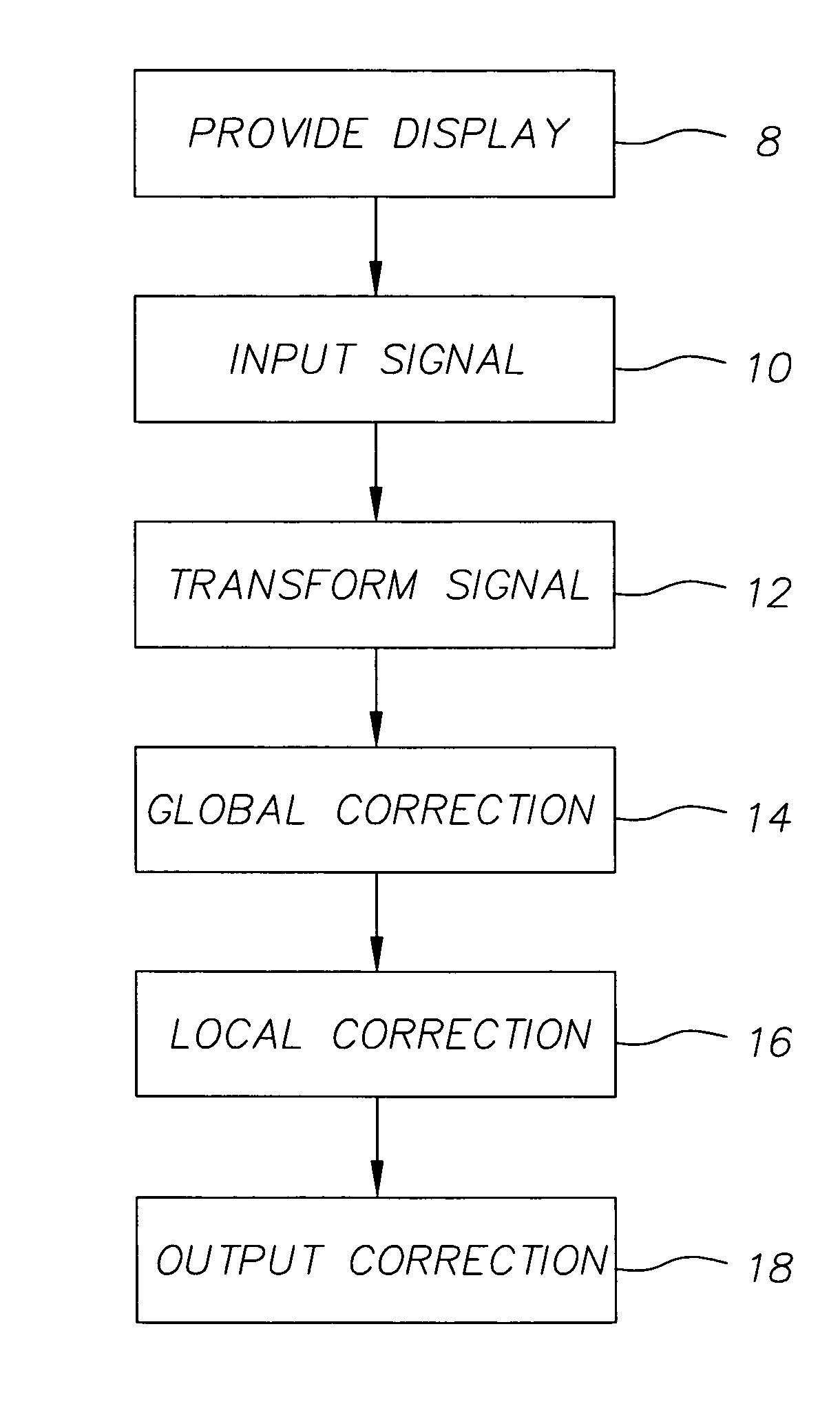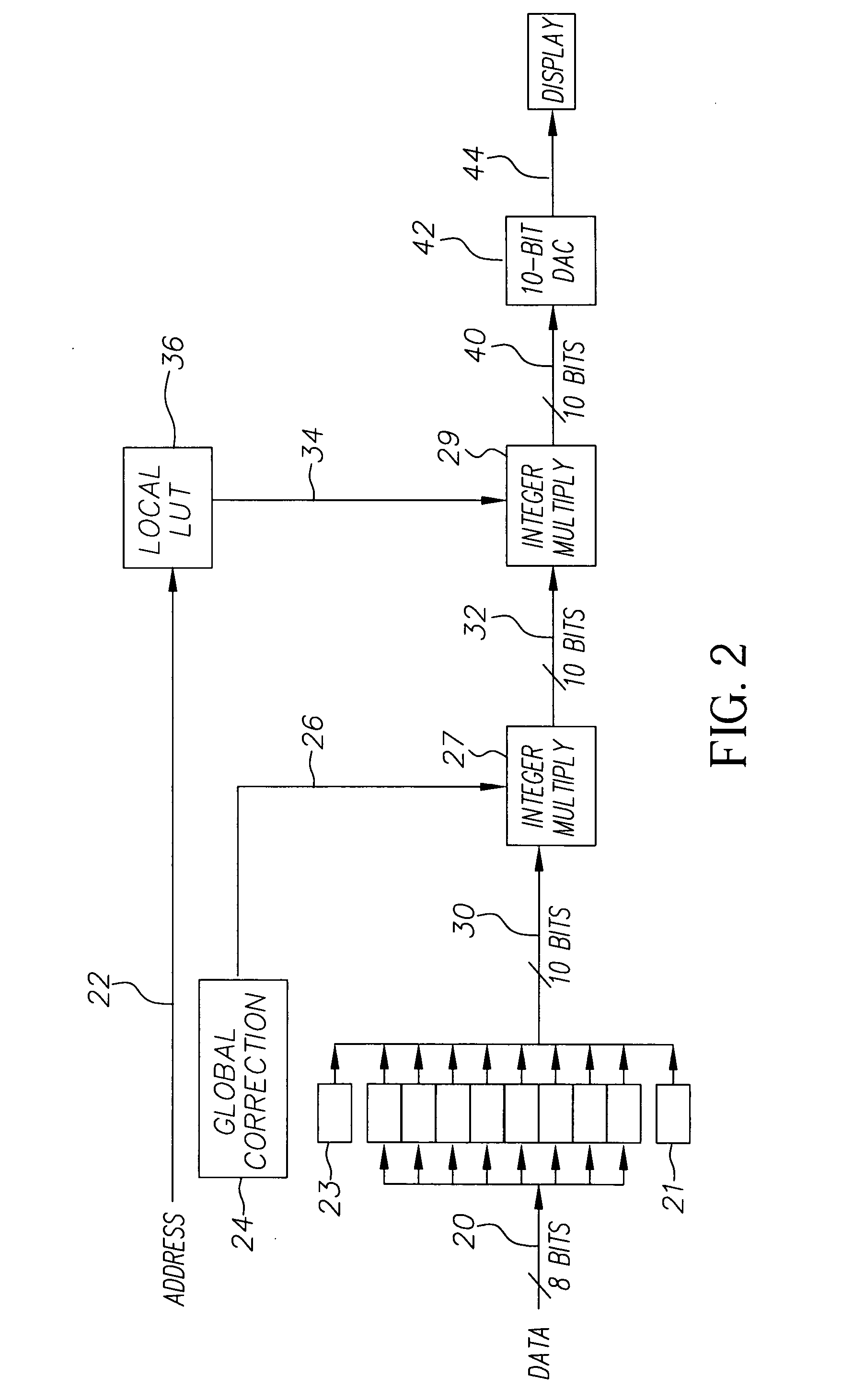Method and apparatus for uniformity and brightness correction in an OLED display
a technology of brightness correction and uniformity, applied in the field of oled displays, can solve the problems of limiting the quality of displays, oled displays suffering from non-uniformity in light-emitting elements, and attributed non-uniformities, so as to improve the yield of the manufacturing process, reduce the complexity of calculations, and improve the uniformity of displays
- Summary
- Abstract
- Description
- Claims
- Application Information
AI Technical Summary
Benefits of technology
Problems solved by technology
Method used
Image
Examples
Embodiment Construction
[0013] Referring to FIG. 1, the present invention is directed to a method for the correction of brightness and uniformity variations in OLED displays, comprising the steps of providing 8 an OLED display having a plurality of light-emitting elements with a common power signal and local control signals; providing 10 a digital input signal for displaying information on each light-emitting element, the signal having a first bit depth; transforming 12 the digital input signal into a transformed digital signal having a second bit depth greater than the first bit depth; integer scaling 14 the transformed signal by a global correction factor for all light-emitting elements to produce a globally corrected signal; integer scaling 16 the globally corrected signal for one or more light-emitting elements of the display by a local correction factor to produce an output 18 corrected signal.
[0014] An integer scaling operation is an operation in which an input integer value is multiplied by an inte...
PUM
 Login to View More
Login to View More Abstract
Description
Claims
Application Information
 Login to View More
Login to View More - R&D
- Intellectual Property
- Life Sciences
- Materials
- Tech Scout
- Unparalleled Data Quality
- Higher Quality Content
- 60% Fewer Hallucinations
Browse by: Latest US Patents, China's latest patents, Technical Efficacy Thesaurus, Application Domain, Technology Topic, Popular Technical Reports.
© 2025 PatSnap. All rights reserved.Legal|Privacy policy|Modern Slavery Act Transparency Statement|Sitemap|About US| Contact US: help@patsnap.com



